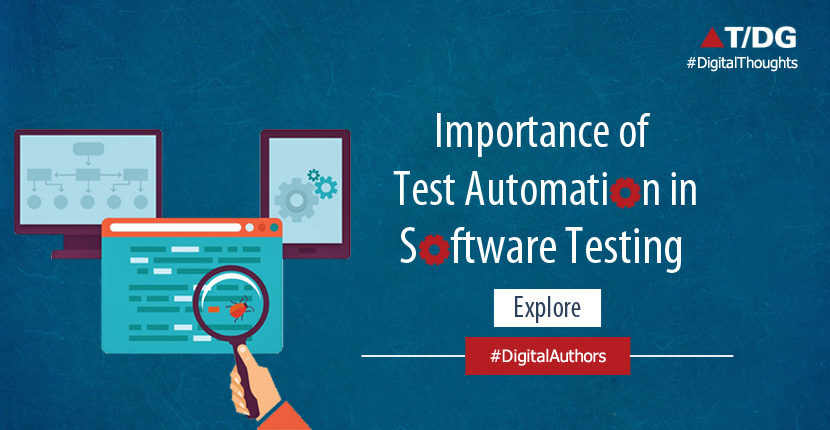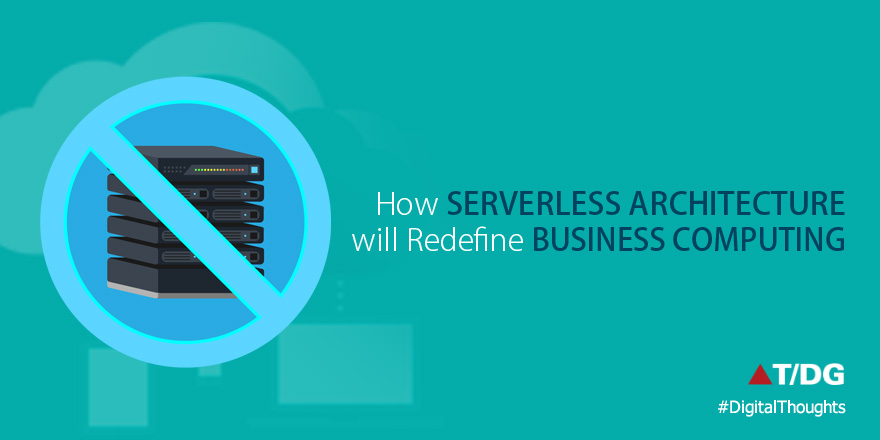
Importance of Automation in Software Testing
Software testing, an integral part of the development process for software applications that meet the highest standards of quality, can be a complex process, to say the least. With the…Read More

Swift vs. React Native: A Comparative Guide for Mobile Apps
Swift is an intuitive programming language for iOS that is easy to learn. React Native, on the other hand, is a programming language that allows developers to build Native mobile…Read More

8 Email Marketing Dos and Don’ts for Beginners
The Email Etiquette Series is all about writing emails that people love to read. In this blog post, we shall look at the basic DOs and DON’Ts that beginners should…Read More

5 Reasons Why Acquiring a Data Center Service Must Be a Top Priority
Starting or building a business can be both exciting and challenging at the same time, especially in the present times. Entering the business industry must not be underestimated, especially now…Read More

Is Your Enterprise Experiencing the Benefits of Semantic Search?
Semantic search is the revolutionizing new concept that has opened an all new plethora of possibilities for enterprise search. Today, enterprises no longer have to be dependent on the traditional…Read More

How to Write an Effective Survey Email
The Email Etiquette Series is all about writing emails that people love to read. In this blog post, we shall explore the art of crafting that survey or customer feedback…Read More

5 Questions to Ask When Choosing an Automation Testing Tool
With an ever increasing need to launch products to the market faster and the growing popularity of the agile methodology that insists on continuous testing, enterprises today need to invest…Read More

How to Write an Effective Product Launch Email
The Email Etiquette Series is all about writing emails that people love to read. In this blog post, we shall explore the art of writing an effective Product Launch email.The…Read More

How API Forms the Backbone of the Software Industry
An API is something which is helping you to have seamless connectivity. Roughly we can describe API’s as a messenger that takes the request and tells the system what you…Read More

Why Entrepreneurs Prefer Using Django For Building Their Online Presence?
Modern entrepreneurs like to establish their brand digitally in the form of an influential website in order to survive in this competitive market. If you wish to build a robust,…Read More

Web Analysis: Do Not Let Your Page Have a Single Failure
Complete web analysis is essential if you want your page to work. You often do not understand why your site does not fetch clicks or users leave soon after they…Read More

PHP vs JavaScript: Understand the Difference
Both JavaScript and PHP are the most popular and versatile programming languages for website development. JavaScript and PHP are both scripting languages that are easy to use for beginners and…Read More

Top 5 Key Reasons To Get Docker Certified Associate Certification
Docker certification means clearing Docker Certified Associate (DCA) exam and acquiring a reputation for your Docker liabilities. Below are some of the benefits as mentioned on the Docker Certification web…Read More

How AI Tech Can Help a Small Business
The term AI, or artificial intelligence, was first coined more than 50 years ago. And while the optimism for AI ran high throughout the years, the real world applications and…Read More

How to Write an Effective Business Proposal Email
A business proposal is a letter in which you introduce your product or service to a potential client or customer and state the reasons why they should be using them.…Read More

Cloud VPS Hosting - The Solution for High Traffic Websites
Everyone wants freedom in the work they are doing. It’s a fact that no one likes someone telling them how, when or why in terms of work. But, freedom is…Read More

A Closer Look at the Building Blocks of 3RDi Enterprise
As data continues to grow, there is a growing need for tools that help you analyze this data and derive useful insights from it. Since a major portion of enterprise…Read More

7 Steps to Introduce Automation Testing in your Organization
Gone are the days when the average turnaround time for software delivery used to be anywhere around a year or even a year and half! Today, when technology is advancing…Read More

5 Crucial Guidelines You Should Always Remember When Scouting For An SEO Company
The current business scenario requires you to have more than just finances for you to be successful. You have probably seen how much money is put into an advertisement…
Read More

Writing an Effective Thank You Email
The Email Etiquette Series is all about writing emails that people love to read. So far, we have covered the common mistakes to avoid as well as the points to…Read More

10 Essential Hints for Python Programming Beginners
I trust that the initial phase of learning any programming language is ensuring that you understand how to learn. Figuring out how to learn is apparently the most basic expertise…Read More

The Benefits of Enterprise Search in Healthcare Industry
A unique search driven approach is what we need to improve the quality of healthcare and business performance of the healthcare industry. By analyzing the unstructured data in the Healthcare…Read More

An Introduction to Automation Testing
Automation testing has become a key part of software development process in most organizations across the globe today. There are several advantages of automation testing and it is experiencing rapid…Read More

TO vs CC vs BCC: How to Use Them Correctly
The Email Etiquette Series is all about writing emails that people love to read. So far, we have covered the common mistakes to avoid when writing professional emails as well…Read More

An App Entrepreneur? Get answers to the questions bugging you!
Even if your app idea is paramount, it really takes a lot more than just putting up your app in the play store to be successful. Though mobile apps…
Read More

Which Points to Focus On Writing a Business Email
The Email Etiquette Series is all about writing emails that people love to read. In the first post of the series, we had looked at the common mistakes to avoid…Read More

Common Mistakes to Avoid When Writing the Perfect Email
The Email Etiquette Series is all about writing emails that people love to read. As promised, we begin with the basics and then gradually move on to tackle emails with…Read More

Major Factors Affecting App Development Cost
With such a demanding and smartphone-centric world, having a business app is now a must. Most of your potential customers are way mobile these days and love to browse websites…Read More

The Email Etiquette Series: An Introduction
The advent and ever growing popularity of social media and messages has overshadowed the email when it comes to communication with your friends and family. However, when it comes…
Read More

What's 2018 Holding for Mobile App Development Market?
Today, the mobile app ecosystem is considered as one of the biggest technology markets. With more than 6 million mobile applications present in the App Store and Google Play…
Read More

GUI vs Usability Testing: Understanding the Difference
When you test your web application for potential bugs and issues, before you make it live, there is a list of testing types that need to be carried out. GUI…Read More

How Usability Tests Play a Crucial Role in Improving User Experience
Usability is one of the key aspects of web design that is often disregarded. Yet, ideally it should be considered way before even deciding which among the various software development…Read More

What makes Python the Most Powerful and Fastest Growing Language
If you look at the rankings of the most popular programming languages, Python is stably at the top positions and surpassed only by languages (Java, C, C ++) that have…
Read More

The Pragmatic Programmer: A Book Review
Why are you here? Well, for now, it’s not a spiritual question as to why we all are ‘here’ (which should be a constant question in your mind…
Read More

Limitations of Search Databases in Medical Literature
Given the exponential growth in medical literature, finding relevant information sooner is critical. Researchers, with more content and less time to analyse it, need systems that are smart and intelligent…
Read More

Meltdown and Spectre CPU Vulnerabilities and its Remediation
Researchers from Google and the research community have independently discovered one hardware vulnerability each, that focus on a flaw in the CPU. If this flaw is taken advantage of,…
Read More

An Intuitive Way to Search with Natural Language Processing (NLP)
We know that computers understand programming languages but how about making them understand human language, the language that you and me speak? Natural Language Processing (NLP) is a field…
Read More

Serverless Architecture Set to Redefine Business Computing
Serverless is a highly trending term in the world of software architecture right now and one can judge this from the many references of the term in journals, products, and…
Read More

9 Reasons Automation Testing is Key to Successful Software Development
How is automation testing different from manual testing? Well, while manual testing involves a person in front of a computer, executing each test step, automation testing involves using a program…
Read More

Web Application Security Guidelines: Protect your Application from Threats and Hacking
Research estimates that 75% of attacks against Web servers are entering through applications and not at the network level. And when a company makes even minor changes on its websites…

 igital
igital